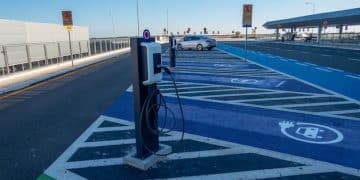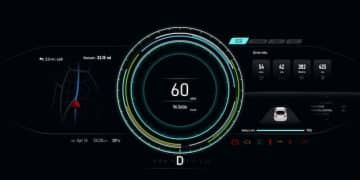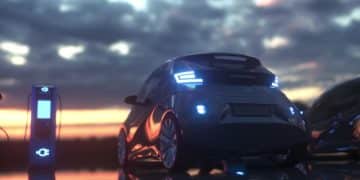Digital Twins Revolutionize US Transportation: Planning & Design
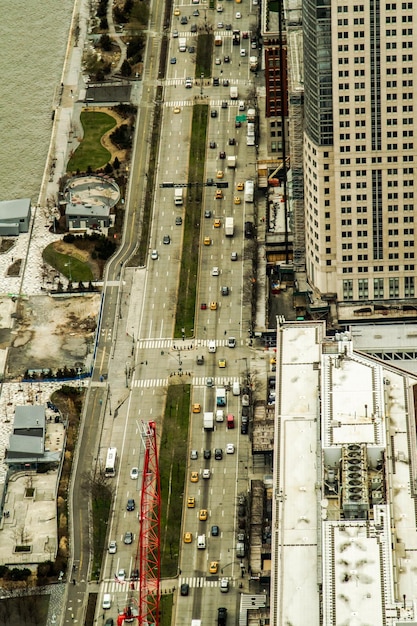
Digital twins are transforming transportation planning and design in the US by providing a virtual replica for simulating, analyzing, and optimizing real-world transportation systems before physical implementation.
The burgeoning field of digital twins is rapidly reshaping various industries, and how digital twins are revolutionizing transportation planning and design in the US is becoming increasingly evident. These virtual replicas of physical assets and systems are enabling transportation professionals to make more informed decisions, optimize infrastructure, and enhance overall efficiency like never before.
Understanding Digital Twins in Transportation
Digital twins are more than just 3D models; they are dynamic virtual representations of physical assets, processes, and systems. In the context of transportation, understanding how these twins are created and maintained is crucial for leveraging their full potential.
Components of a Digital Twin
A digital twin comprises three main components: the physical asset (e.g., a bridge, road, or vehicle), the virtual representation of that asset, and the data connection between the two. This connection allows for real-time data flow, enabling the virtual model to mirror the state of the physical asset accurately.
Data Sources and Integration
Data for digital twins comes from various sources, including sensors, IoT devices, historical data, and real-time feeds. Integrating these diverse data streams into a cohesive virtual environment is essential for creating a useful and accurate digital twin.
- Real-time sensor data from roads and vehicles.
- Historical traffic patterns and incident reports.
- Weather data affecting transportation infrastructure.
- Structural health monitoring sensors on bridges and tunnels.
By integrating and analyzing these data, transportation planners can gain insights into system performance, predict potential issues, and optimize operations proactively. This comprehensive approach to data management and analysis is fundamental to the effective use of digital twins in transportation.
Benefits of Digital Twins in Transportation Planning
The deployment of digital twins in transportation planning brings a plethora of advantages, fundamentally altering how infrastructure is designed, maintained, and optimized. Let’s delve into the key benefits that these digital replicas offer.
Enhanced Planning and Design
Digital twins allow planners to simulate various scenarios and evaluate different design options before physical implementation. This can lead to more efficient and sustainable infrastructure projects, reducing both costs and environmental impact.
Improved Maintenance and Operations
By continuously monitoring the condition of physical assets, digital twins can predict maintenance needs and optimize operational strategies. This results in reduced downtime, increased safety, and extended asset lifecycles.

Risk Management and Resilience
Digital twins enable transportation agencies to assess risks associated with extreme weather events, accidents, or other disruptions. By simulating these scenarios, agencies can develop resilience strategies and minimize the impact of unforeseen events.
- Predicting the impact of floods on road networks.
- Evaluating the structural integrity of bridges under heavy traffic.
- Simulating evacuation routes during natural disasters.
- Assessing the effect of construction on traffic flow.
Use Cases of Digital Twins in US Transportation
The practical applications of digital twins in US transportation are vast and varied, spanning across different modes and aspects of infrastructure management. Examining some specific use cases provides a clear picture of their transformative potential.
Smart Highways
Digital twins are being used to create smart highways that can adapt to real-time traffic conditions, optimize lane usage, and provide drivers with up-to-date information. These systems improve traffic flow, reduce congestion, and enhance safety.
Public Transportation Optimization
Digital twins can simulate the operation of public transportation systems, allowing planners to optimize routes, schedules, and resource allocation. This leads to more efficient and reliable public transport services.
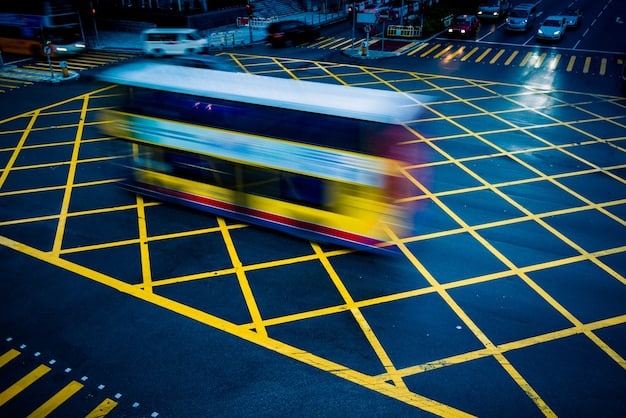
Airport Management
Digital twins are helping airport operators manage complex operations such as passenger flow, baggage handling, and aircraft movements. This results in improved efficiency, reduced delays, and enhanced passenger experience.
- Optimizing gate assignments based on real-time flight schedules
- Simulating passenger flow to identify bottlenecks in security lines
- Predicting maintenance needs for airport infrastructure
- Improving energy efficiency in airport buildings.
These use cases underscore the versatility and potential of digital twins to address a wide range of challenges in the transportation sector, making transportation systems smarter, safer, and more efficient.
Challenges and Considerations
While the potential benefits of digital twins are substantial, their implementation is not without challenges. Addressing these obstacles is crucial for successful deployment and widespread adoption.
Data Privacy and Security
The vast amounts of data required for digital twins raise concerns about data privacy and security. Protecting sensitive information from unauthorized access and ensuring compliance with privacy regulations are paramount.
Interoperability and Standardization
The lack of interoperability and standardization across different digital twin platforms can hinder collaboration and data sharing. Developing open standards and protocols is essential for fostering a connected ecosystem.
Scalability and Cost
Implementing digital twins can be expensive and complex, particularly for large-scale transportation systems. Ensuring scalability and cost-effectiveness is vital for making these technologies accessible to a wider range of agencies.
- Developing cost-effective sensor technologies.
- Leveraging cloud computing to reduce infrastructure costs.
- Adopting modular and scalable digital twin platforms.
- Establishing partnerships between public and private sectors.
Overcoming these challenges requires a concerted effort from industry, government, and research institutions to develop best practices, standards, and innovative solutions that promote the responsible and effective use of digital twins.
The Future of Digital Twins in Transportation
Looking ahead, the future of digital twins in transportation is bright, with continued advancements in technology and growing recognition of their transformative potential. Several trends are expected to shape the evolution of these virtual replicas.
Integration with Artificial Intelligence (AI)
The integration of AI and machine learning will enhance the capabilities of digital twins, enabling them to analyze data more effectively and make more accurate predictions. This will lead to smarter and more autonomous transportation systems.
Augmented Reality (AR) Applications
AR technology will allow transportation professionals to interact with digital twins in a more intuitive and immersive way. This will improve collaboration, decision-making, and training.
Sustainability Focus
Digital twins will play a crucial role in promoting sustainable transportation practices by optimizing energy consumption, reducing emissions, and supporting the development of eco-friendly infrastructure.
- Designing energy-efficient transportation networks.
- Optimizing traffic flow to reduce carbon emissions.
- Supporting the adoption of electric vehicles and alternative fuels.
- Promoting sustainable urban planning and development.
These future trends highlight the ongoing evolution of digital twins and their increasing importance in shaping the future of transportation in the US. As technology advances and adoption grows, digital twins will continue to drive innovation, improve efficiency, and create more sustainable and resilient transportation systems.
Successful Implementation Strategies
Successfully implementing digital twins in transportation requires a well-defined strategy that aligns with organizational goals, addresses technical challenges, and fosters stakeholder engagement. Key strategies include:
Define Clear Objectives
Clearly define the goals and objectives for using digital twins, such as improving safety, reducing costs, or enhancing sustainability. This will help focus efforts and measure success.
Data Governance and Management
Establish robust data governance policies and procedures to ensure data quality, security, and privacy. This includes defining data standards, implementing data validation processes, and managing data access controls.
Collaboration and Partnerships
Foster collaboration and partnerships between transportation agencies, technology providers, research institutions, and other stakeholders. This will facilitate knowledge sharing, resource pooling, and the development of innovative solutions.
- Engaging stakeholders early in the implementation process.
- Establishing clear roles and responsibilities.
- Providing training and education to build digital twin expertise.
- Celebrating successes and sharing lessons learned.
| Key Aspect | Brief Description |
|---|---|
| ⚙️ Enhanced Planning | Simulating designs aids in optimal infrastructure development. |
| 🛡️ Risk Management | Assessing risks through simulations enhances resilience. |
| 🚦 Smart Highways | Real-time adaptation improves safety and reduces congestion. |
| 🚌 Public Transport | Optimizing routes makes public transport more reliable. |
Frequently Asked Questions
▼
A digital twin is a virtual representation of a physical object or system. It mirrors its real-world counterpart, using real-time data to simulate and predict its behavior.
▼
They allow planners to simulate various scenarios, test different designs, and optimize infrastructure before any physical construction, saving time and resources.
▼
Data comes from various sources, including sensors, IoT devices, historical traffic patterns, weather data, and structural health monitoring systems.
▼
Challenges include data privacy concerns, lack of interoperability and standardization, and the high costs associated with implementation and maintenance.
▼
The future includes enhanced integration with AI, the use of AR for better interaction, and a greater focus on sustainability and eco-friendly transportation practices.
Conclusion
In conclusion, digital twins are poised to revolutionize transportation planning and design in the US, offering unprecedented opportunities to optimize infrastructure, enhance safety, and improve efficiency. While challenges remain, ongoing advancements in technology and a strategic approach to implementation will pave the way for a smarter, more sustainable transportation future.
